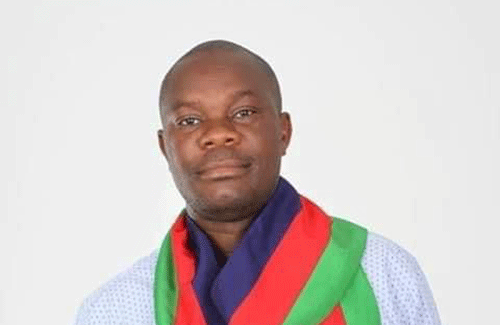Lahja Nashuuta
Swapo Party Youth League secretary Ephraim Nekongo has refuted allegations that the governing party had used artificial intelligence to generate the party’s manifesto, claiming they used a computable general equilibrium (CGE) model.
Swapo launched its much-anticipated manifesto over the weekend at a packed Sam Nujoma Stadium in Windhoek.
While the party members hailed the manifesto as a great roadmap towards a prosperous Namibia in terms of socio-economic development, it was also labelled as a ChatGPT product.
Political scientist and lecturer at the University of Namibia Rui Tyitende
was quoted by a local newspaper as labelling the document “an empty ChatGPT manifesto”.
He accused the party of using artificial intelligence (AI) to project the unemployment in the country, and chart possible solutions.
Tyitende told the newspaper “there is no difference between their manifesto of 1989 and that of 2024. It is an empty ChatGPT manifesto, as it fails to address structural socio-economic issues with a sense of urgency. If this is what a (Netumbo) Nandi-Ndaitwah presidency would look like, then we are not going anywhere, but remain stuck in the mud,” the quote reads. His comments attracted mixed feelings amongst young leaders from various political parties. Popular Democratic Movement Youth League secretary Julia Nekwaya said the manifesto contains unrealistic promises.
“If it is a fact that Swapo used the AI tool to generate content for their manifesto, then this country is not serious with youth unemployment and job-creation.
This country is full of economists and socio-economic development specialists. With all the money, they could hire a consultancy if they don’t have the capacity to draw (up) a comprehensive document with tangible solutions,” she stated.
Sharing similar sentiments was Landless People’s Movement youth leader Duminga Ndala, who maintained that the use of AI to generate the manifesto means that the party does not have a sustainable and solid solution in terms of addressing youth unemployment. “The usage of AI to generate the manifesto that should transform the living conditions of Namibians is uncalled for, very unpractical, and demonstrates the capacity deficit within the governing party.
The governing party does not take the electorate in confidence, and the fact that it used AI to generate content copy and paste shows that the party does not have a sustainable transformative strategy to change the socio-economic status of Namibians,” he said. The national spokesperson of the Independent Patriots for Change, Imms Nashinge, said while there is nothing wrong with the use of AI, its usage to generate the very important document raises questions about the party’s credibility and commitment to improve the socio-economic issues facing the country.
“It is embarrassing. If they are serious, they need to recall that manifesto, and craft the manifesto that speaks to the social and economic conditions of Namibians,” he noted. He added: “That shows that the liberation struggle movements are exhausted, and we need to help them pack their bags and go home. It shows how uncommitted they are, and they’re not interested in addressing bread and butter issues affecting the Namibian people. It is unfortunate, horrible and shocking for a reputable organisation with resources and capacity to put the right people to generate a doable manifesto that speaks to the needs of all Namibians”.
Not true
Nekongo said the CGE model was calibrated using the 2019 Social Accounting Matrix (SAM) for the Namibian economy to simulate and estimate the potential impacts of proposed youth employment strategies.
He said the matrix was locally-developed by the Namibia Statistics Agency (NSA).
“Our manifesto was meticulously crafted through the collaborative efforts of our members from sections and branches to districts and regions,” he said.
CGE models are described as large numerical models which combine economic theory with real economic data to computationally derive the impacts of policies or shocks in the economy.
Motivating the use of the model, he said it is a widely-recognised tool for ex-ante policy evaluation, and that it allows for comprehensive analysis across sectors and agents in the economy, making it indispensable for identifying, selecting and monitoring optimal strategies to tackle development challenges, including youth unemployment. Nekongo maintained that by calibrating the CGE model on the SAM, a robust, transparent and reproducible framework for evaluating the employment strategies was created. “The analysis specifically focused on quantifying the spillover effects of public investment on employment, with particular emphasis on youth employment. To achieve this, official data from the NSA were utilised to establish the relationship between public investment and the sectoral gross domestic product (GDP),” he said.
“This relationship was then introduced into the CGE model as an exogenous shock, enabling the simulation of direct, indirect and induced effects on key economic indicators, such as GDP growth, employment levels and poverty reduction. The findings offer critical insights into how targeted policy interventions can drive youth employment and broader economic outcomes, providing evidence-based recommendations for effectively addressing the challenge of youth unemployment in Namibia,” he continued. “Independent senior economist Mwala Lubinda also corroborated and confirmed that the methodology applied is very suitable in undertaking socio-economic foresight in the most accurate manner,” he maintained.


